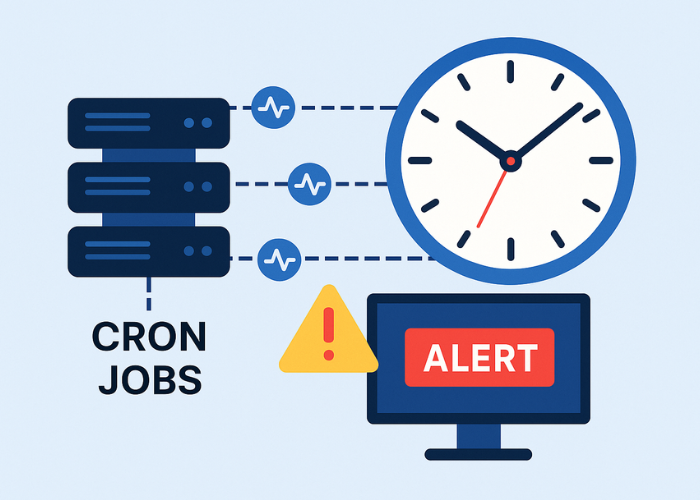Most failures don’t kick the door down. They slip in quietly. A scheduled task doesn’t run. A sensor goes offline. A data pipeline hangs. One silent failure and suddenly your reports are off, your backups are missing, or your app stops responding.
This is exactly what cron monitoring, also called heartbeat monitoring is built for. It’s not flashy. It doesn’t replace logs or metrics. But it gives you something those tools can’t: confirmation that something _actually happened_ when it was supposed to.
Cron Monitoring: What It Does and Why It’s Critical
At its core, heartbeat monitoring is dead simple. You expect a ping—at a specific time, from a specific task or service. If it doesn’t come, you know something’s wrong. No guesswork, no waiting for users to complain.
This turns invisible failures into clear, actionable alerts. And in environments where timing is everything, that’s a game-changer. Let’s break it down with some real-world scenarios.
1. Cron Jobs: Stop Flying Blind
Cron jobs are essential and invisible when they work. Until they don’t… Whether it’s a backup script, an email digest, or a nightly ETL run, a missed cron job can quietly break a critical workflow. Heartbeat monitoring gives every job a voice. If a job finishes, it pings. If it doesn’t, you hear about it immediately.
This isn’t just about uptime. It’s about trust in your automation.
2. IoT Devices: Know When They Go Dark
When you rely on smart sensors, trackers, or embedded devices, uptime isn’t optional. If a device stops reporting, you need to know before it starts affecting operations.
Heartbeat monitoring keeps tabs on each device’s check-ins. When one misses a beat, you get the signal so you can investigate before there’s a gap in your data, or worse, a safety issue.
3. Data Pipelines: Keep It Flowing
ETL pipelines are only as reliable as their weakest stage. One failed extract, transform, or load, and your analytics, reports, or downstream apps are stuck running on stale data.
By embedding heartbeats at each step, you get a real-time health check across your data flow. If anything stalls or silently fails, you get alerted. That’s visibility most teams don’t have until it’s too late.
4. Chatbots & AI: Keep Conversations Alive
Your chatbot can’t ghost your users. If the backend that powers it fails, the experience breaks instantly.
Heartbeat monitoring tracks the systems behind the scenes—APIs, AI engines, response processors—so you know if something critical goes offline. It’s how you keep support and engagement online 24/7, not just during business hours.
5. Other Silent Fails You Don’t Want to Miss
- Backups that never ran
- Billing jobs that quietly failed
- Compliance scans that skipped a cycle
- CI/CD stages that hung mid-deploy
- Log rotations that didn’t clean up
These aren’t edge cases. They’re everyday events that heartbeat monitoring helps you catch early—before users notice, before data is lost, before downtime hits.
Ready to Set It Up
Heartbeat monitoring sounds great, but how do you actually wire it into your stack?
We’ve got you covered.
Check out our quick-start guide → It walks you through how to add heartbeat pings to your existing jobs, scripts, and pipelines with just a few lines of code. No overhauls. No guesswork. Just reliability you can trust.

